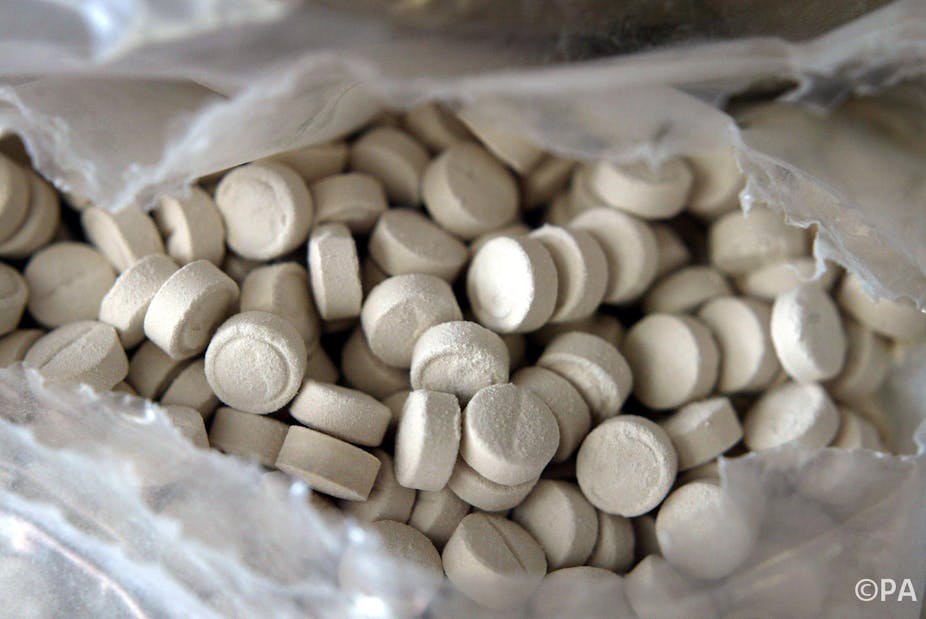The past few weeks have seen something of a media feeding frenzy around the supposed massive increase in deaths from “legal highs”. Closer inspection of the facts, some of which needed to be extracted by Freedom of Information (FoI), suggests that most of the hype is ill-informed and misleading.
The data sets that have occasioned the claims have been shown to contain a strange mixture of drugs, most of which are not legal, and some of which don’t even produce a “high”. It would be more accurate to call these drugs new psychoactive substances.
A letter I have published with Dr Leslie King in the Lancet shows that less than a sixth of the claimed “legal highs” deaths were actually from legal drugs, and most were associated with drugs that have been illegal for more than ten years. One FoI, for example, showed 13 out of 52 deaths associated with new psychoactive substances in one official report were linked to GHB, which was added to the Misuse of Drugs Act in 2003 and is certainly not a new psychoactive substance. And in most cases it cannot be established that any one drug was responsible.
So why the alarmist nature of the reporting? Its not easy to say; the popular press has always had a morbid fascination with new drugs and often has magnified or even invented stories of their harms to grab headlines. The effect of this is often to increase interest in, and thus use of, these drugs which until the entry of the national press are largely unknown to the public.
In the increasingly narrow field of influence of newspaper journalism one of the few areas left is the creation of health scares. I personally suspect that some newspaper editors see banning drugs as a “badge of success” to be celebrated alongside exposing footballers sexual misadventures and reporting how new forms of influenza will “kill us all”.
The government seems to have bought into the hysteria also, hoping to appear on the ball and decisive. At the last G8 summit, David Cameron’s unique contribution was to announce that the UK would lead the world in research on “legal highs”.
The empty gesture of this rhetoric was exposed within a few weeks when the home secretary made such research almost impossible by introducing new rules that make the sharing and holding of the most worrying new drugs subject to enormous regulatory burdens which means they are still too expensive and difficult to study.
Since then the new drugs minister Norman Baker has set up a committee to urgently explore the “growing threat” of “legal highs” and advise on ways to deal with it. When one considers that there are only ten or so deaths per year from these, compared with 80,000 from tobacco and 8,000 from alcohol one wonders why bother? Presumably to appease the media. Just as previous governments have done over the past half-century with amphetamines, LSD, MDMA (ecstasy), morning glory seeds, cannabis and magic mushrooms among others.
It is often stated that even if the drugs are not very harmful, banning them can’t do anything but good. But this is a false assumption as illustrated by the spate of deaths recently from PMA and PMMA. These are more toxic analogues of MDMA that were not encountered before MDMA was made illegal and its production was limited by seizures of the precursor chemicals used to make it. They then became sold as “ecstasy” and because they have slower onsets of action than MDMA users can believe after the first dose that they haven’t taken enough, so can then go on to take more and accidentally overdose.
This is one of many examples of the perverse effects of prohibition: limiting availability of a relatively low-harm drug can lead to greater harms from alternatives. Another recent example is the explosion of sales of cannabis-mimetic “legal highs” to circumvent the ban on cannabis. Many of these are significantly more potent and harmful that the banned drug.
For this and other reasons the New Zealand government has just brought in a law to allow the selling of safe “legal highs”. We hope the current review pays close attention to this novel and rational approach to drug use in young people.

